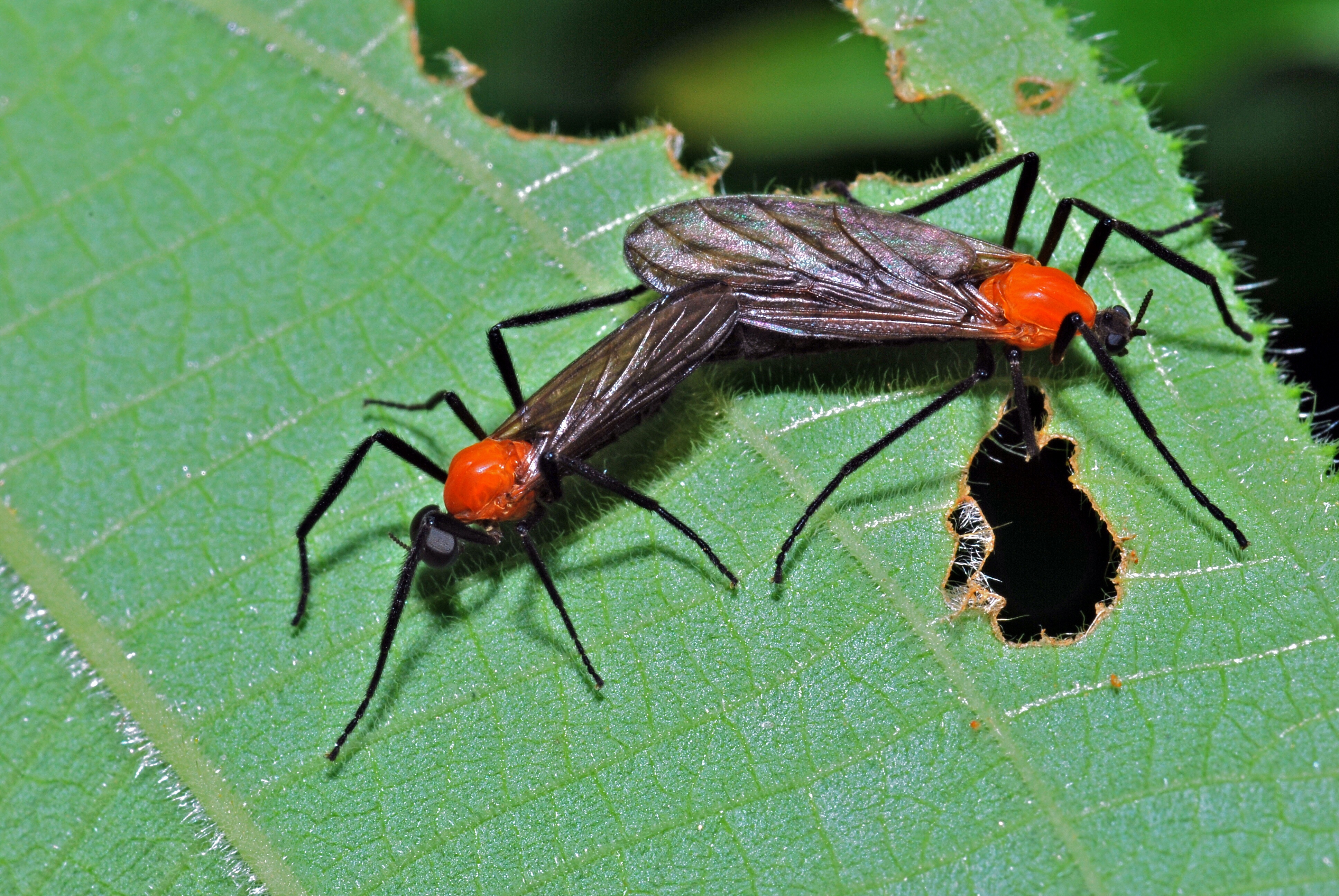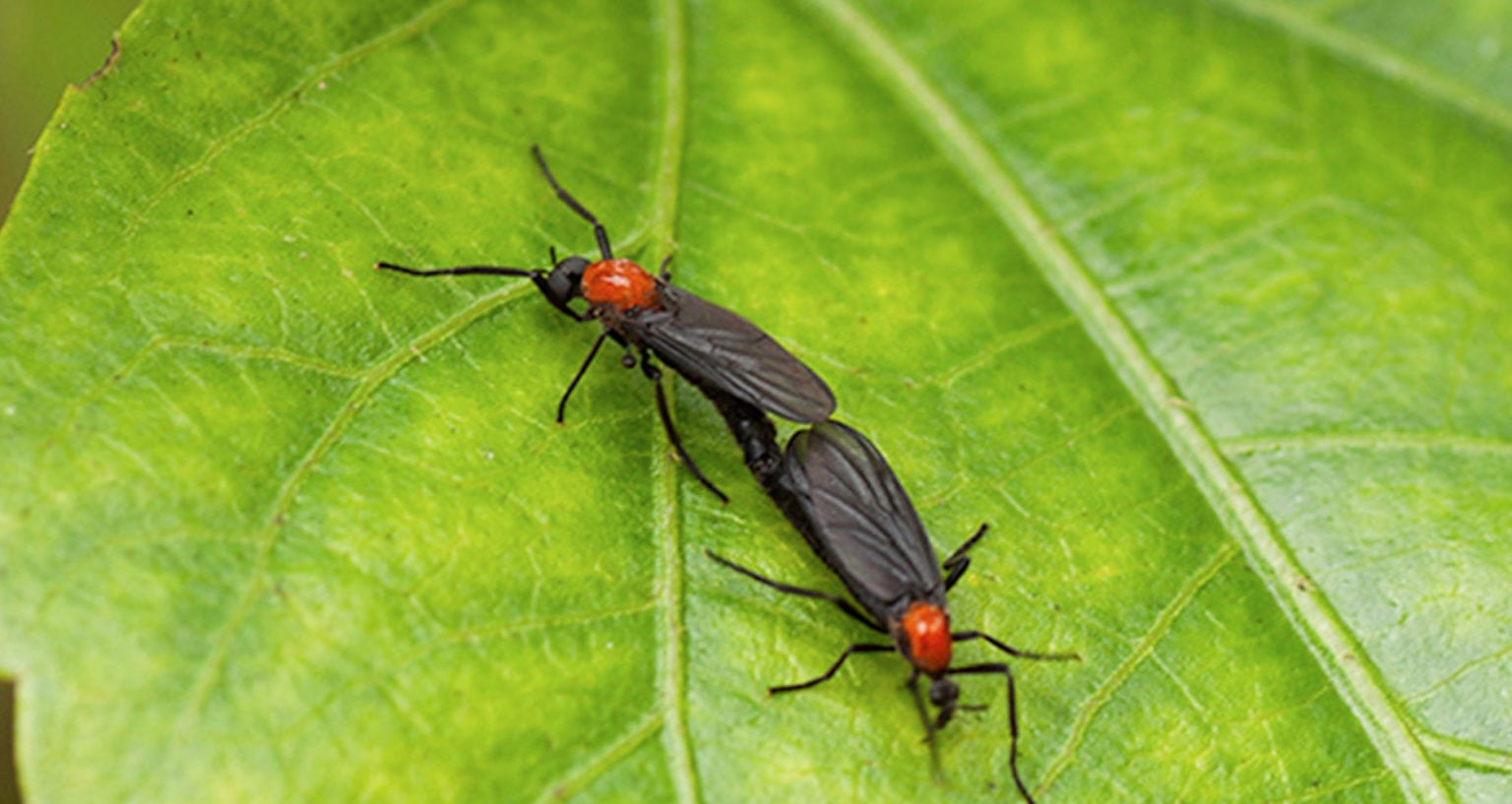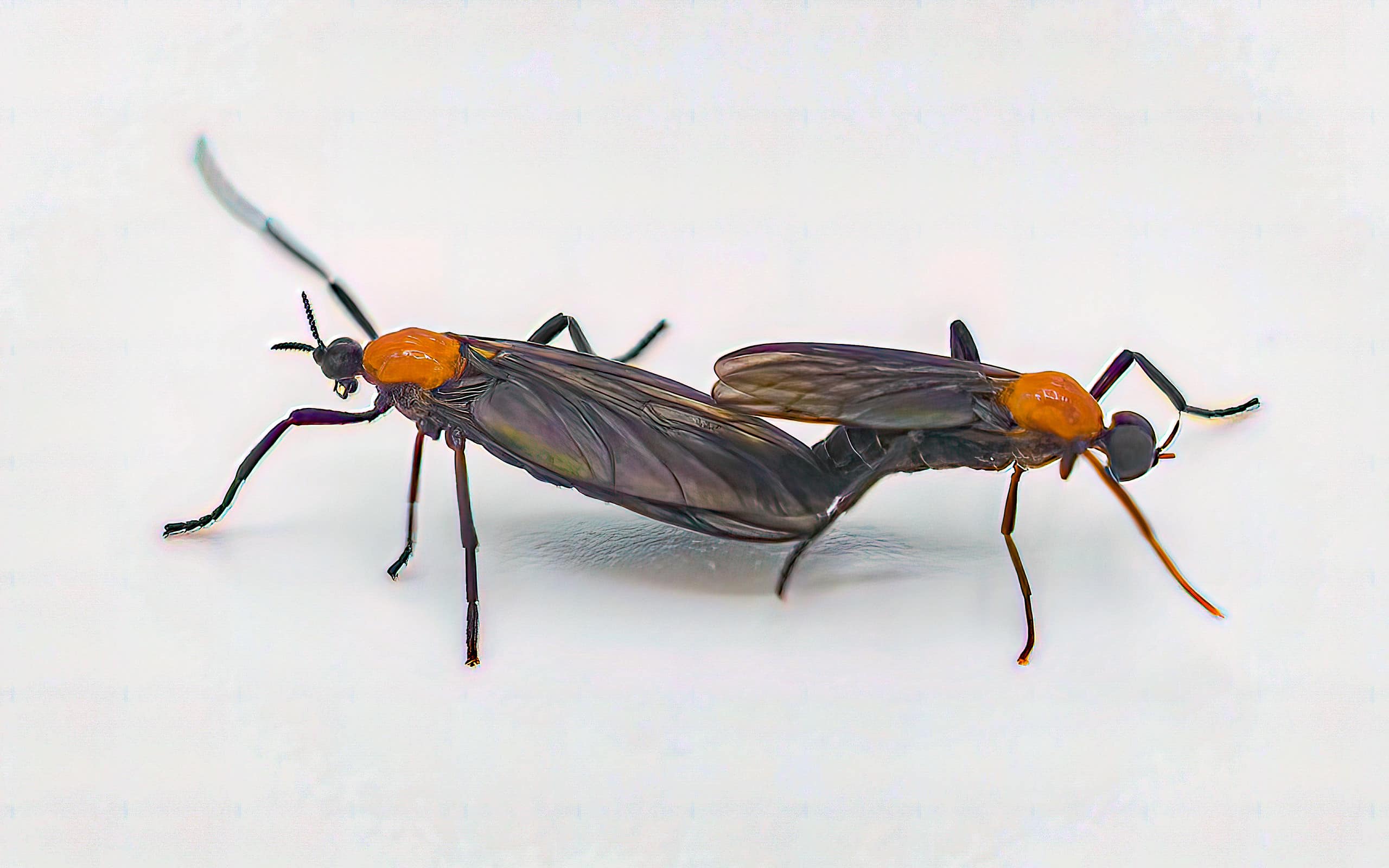The Unloved Swarm: Understanding Love Bugs And Their Impact
Few insects evoke such a strong reaction as the love bug, especially for those living along the Gulf Coast and throughout the southeastern United States. These small, black-bodied, red-headed flies, scientifically known as Plecia nearctica, are infamous not for any bite or sting, but for their sheer numbers and the significant nuisance they create. From clogging car radiators and splattering windshields to blanketing homes and hiking trails, love bugs are a seasonal spectacle that residents and visitors alike have learned to dread.
While their name might suggest romance, their presence often brings anything but. These unique march flies are notorious for their mating flights, where pairs remain coupled for extended periods, creating dense swarms that can turn a pleasant drive or an outdoor stroll into a sticky, frustrating ordeal. But beyond the immediate annoyance, what truly defines these creatures, where do they come from, and how do we co-exist with them? This article delves into the fascinating, albeit often frustrating, world of love bugs, exploring their biology, their impact, and practical strategies for managing their seasonal invasions, even touching upon their recent, curious appearances in unexpected corners of the globe.
Table of Contents
- What Exactly Are Love Bugs? (Plecia nearctica)
- The Love Bug Life Cycle: A Brief but Intense Existence
- Why Are Love Bugs Such a Nuisance?
- Love Bugs in Florida: A Long-Standing Challenge
- The Curious Case of Love Bug Decline in Florida
- Global Outbreaks: The South Korean Phenomenon
- Managing the Love Bug Nuisance: Practical Control Measures
- Beyond the Buzz: Understanding Their Ecological Role
What Exactly Are Love Bugs? (Plecia nearctica)
Love bugs, formally known as Plecia nearctica, are a distinctive species of march fly. Their appearance is quite characteristic: a small, slender black body topped with a striking red head. Unlike many other insects that cause alarm, love bugs do not bite or sting humans or animals. Their primary purpose as adults is reproduction, which they carry out with remarkable dedication, often seen flying in pairs, linked together in a perpetual embrace—hence their affectionate, if ironic, common name. This paired flight is a hallmark of their swarming behavior.
Originally, these insects are native to Central America, but they have established themselves as an invasive species across the southeastern United States, particularly thriving in states like Florida, Georgia, Alabama, Mississippi, and Louisiana, along the Gulf Coast. Their expansion northward is believed to have occurred naturally, aided by human activities such as increased traffic along highways, which inadvertently transports them. While their exact origin story in the U.S. is still debated among entomologists, their prevalence in these warm, humid regions is undeniable. Understanding what love bugs are is the first step in comprehending why they become such a pervasive issue during their peak seasons.
The Love Bug Life Cycle: A Brief but Intense Existence
The life cycle of love bugs is relatively short, yet it's precisely this brevity and intensity that contribute to their nuisance factor. The most visible stage is the adult, which emerges primarily to mate and reproduce. This is when we observe them in their characteristic swarms, often with male and female pairs connected end-to-end, flying in unison. This "mating in pairs" behavior is central to their existence, as the female lays her eggs shortly after mating.
Once the eggs are laid, typically in decaying vegetation, the larval stage begins. Love bug larvae play an important ecological role, feeding on decomposing organic matter, such as fallen leaves, grass clippings, and other plant debris. They are often found in moist, shaded areas, including under parking curbs, within grass, in wood piles, and under rocks – essentially, wherever there's abundant decaying plant material. This hidden phase is crucial for nutrient cycling in the environment. After several weeks or months, depending on environmental conditions, the larvae pupate, eventually emerging as adults. There are typically two major generations of love bugs each year in the southeastern US: one appearing between late April and May, and another from late August to September. However, as the data suggests, some regions, like South Korea, have seen peak appearances between late June and early July, indicating slight variations based on local climate. The adult love bugs live for only a few days, dedicating their entire brief existence to mating and ensuring the next generation.
Why Are Love Bugs Such a Nuisance?
Despite their harmless nature in terms of biting or stinging, love bugs are unequivocally considered a public nuisance. Their sheer numbers during peak swarming periods are astounding, leading to a variety of problems for residents and visitors alike. The issues range from practical annoyances to potential damage to property, making their presence a significant concern for many.
Vehicle Damage and Maintenance Headaches
Perhaps the most common complaint about love bugs revolves around their impact on vehicles. When these insects swarm, they inevitably collide with cars, particularly at highway speeds. The problem isn't just the splattering; it's what happens next. Love bugs contain acidic bodily fluids. When they die on car surfaces, especially hot ones like hoods, grilles, and windshields, these fluids begin to break down the paint and clear coat if not removed promptly. The longer they remain, the more corrosive they become, leading to permanent etching and discoloration that can be costly to repair.
Beyond paint damage, love bugs pose a significant mechanical risk. Their bodies can clog radiators, impeding airflow and causing engines to overheat. They also accumulate on windshields, creating a thick, greasy film that windshield wipers struggle to clear, severely impairing driver visibility. This can be a serious safety hazard, especially during heavy swarms. For car owners in affected regions, frequent washing and protective measures become essential, adding to maintenance costs and time.
Impact on Outdoor Activities and Quality of Life
The nuisance of love bugs extends far beyond vehicles. Their massive swarms can blanket entire areas, making outdoor activities incredibly unpleasant. Imagine trying to enjoy a picnic, a walk in the park, or a hike when thousands of these insects are constantly flying into you, your food, and your face. Social media videos, particularly from recent outbreaks in South Korea, vividly illustrate this, showing hiking trails on mountains like Gyeyangsan completely covered by love bugs. This kind of infestation can deter people from engaging in outdoor recreation, impacting tourism and local economies.
For residents, the presence of love bugs can be a constant source of irritation. They swarm around homes, accumulating on exterior walls, windows, and doors. While they don't typically invade homes in large numbers if screens are present, their sheer presence outside can be overwhelming. Some residents in affected areas, like those contemplating moving to Florida from places like San Diego, express significant concerns about the general "bug problem," including love bugs, and the idea of constantly needing repellents. This highlights how love bugs, despite being harmless individually, can collectively diminish the quality of life and even influence relocation decisions for those sensitive to insect populations.
Love Bugs in Florida: A Long-Standing Challenge
Florida, with its warm, humid climate and abundant decaying vegetation, has long been considered the epicenter of love bug activity in the United States. For decades, residents have experienced intense love bug seasons, often describing them as a pervasive and unavoidable aspect of life in the Sunshine State. Anecdotal evidence from long-time Floridians suggests that some seasons are more severe than others, with one individual noting, "I have been in Florida all my life and have never seen a love bug season like this before. Tons of them little suckers." This sentiment underscores the varying intensity of outbreaks and the deep familiarity residents have with these insects.
The prevalence of love bugs in Florida is a significant consideration for anyone contemplating a move to the state. Prospective residents, especially those who "hate insects, bugs, mosquitoes, etc.," often express apprehension. The thought of constantly spraying repellent or dealing with insect-related issues can be a major deterrent. While Florida offers many attractions, the reality of its abundant insect population, including love bugs, is a "risky move" for those particularly unfond of bugs. Love bugs are everywhere during their season, nesting under parking curbs, traveling through grass, wood piles, and under rocks, making them an unavoidable part of the landscape in many areas, from Sarasota to Fort Lauderdale.
The Curious Case of Love Bug Decline in Florida
Despite their historical prevalence and the often-overwhelming numbers, a curious phenomenon has been observed in recent years: a significant decline in love bug populations across Florida. This trend has puzzled scientists and residents alike, as the reasons for this reduction are not entirely clear. While many might welcome fewer love bugs, understanding the underlying causes is crucial for ecological insights.
Scientists are actively investigating potential factors contributing to this decline. Leading hypotheses include environmental changes such as climate change, which could alter their breeding cycles or habitat suitability. Pollution, particularly the widespread use of pesticides and herbicides, might also play a role by affecting their food sources or directly impacting their populations. Furthermore, habitat destruction and fragmentation, as natural areas are converted for development, could reduce the availability of suitable breeding grounds for the larvae. This decline highlights the delicate balance of ecosystems and how even nuisance species are susceptible to broader environmental shifts. While the exact reasons remain subjects of ongoing research, this observed trend offers a fascinating counterpoint to the typical narrative of love bug abundance.
Global Outbreaks: The South Korean Phenomenon
While love bugs are primarily associated with the southeastern United States, recent events have brought them into the global spotlight, particularly in South Korea. In an unexpected turn of events, swarms of love bugs have descended upon parts of South Korea, covering mountain peaks, homes, and other public spaces. Videos posted on social media have gone viral, showing thousands of these insects "blanketing hiking trails on the Gyeyangsan mountain" in Incheon's Gyeyang district.
This outbreak has caught many by surprise, as love bugs are not native to the Korean peninsula. Their appearance has led to widespread public concern and media attention, with South Korea "wrestling with an outbreak of the insects." The timing of these swarms in South Korea, typically appearing between late June and early July, aligns somewhat with one of their peak seasons in the US, suggesting similar environmental triggers might be at play. The presence of love bugs in South Korea highlights the increasing interconnectedness of the world and the potential for invasive species to spread far beyond their native ranges, possibly through international trade or travel. It underscores the importance of understanding and managing these insects, not just regionally, but on a broader scale, as their reach expands.
Managing the Love Bug Nuisance: Practical Control Measures
Given that love bugs are a recurring nuisance, especially in their peak seasons, finding effective ways to manage their presence is a priority for many. While complete eradication is neither feasible nor desirable (given their ecological role), there are several practical measures individuals can take to minimize their impact on homes and vehicles.
Protecting Your Vehicle
Vehicles are often the primary target of love bug swarms, and proactive measures can save significant time and money on cleaning and repairs. The most crucial tip is to wash your car frequently during love bug season, ideally within 24 hours of exposure. This prevents the acidic bug guts from etching into your paint. Applying a good coat of wax to your car's exterior provides an extra layer of protection, making it harder for the bugs to stick and easier to wash them off. Some drivers also use bug deflectors on the front of their vehicles, which can help redirect airflow and reduce the number of bugs hitting the windshield and hood. Additionally, installing a fine mesh screen over your car's radiator grille can prevent love bugs from clogging the cooling system, ensuring proper engine function and preventing overheating.
Home and Personal Protection
While love bugs are less likely to invade homes in large numbers compared to other pests, their swarming around properties can still be annoying. Ensuring that your home has intact window screens is paramount. This simple barrier, which is surprisingly less common in some regions like the UK, is essential for keeping various insects, including love bugs, out while allowing fresh air in. For personal protection, avoiding outdoor activities during peak swarm times, especially at dawn and dusk when they are most active, can help. Some natural remedies are also suggested; for instance, a natural spray recipe involving citrus-based cleaners or essential oils diluted in water can act as a deterrent around entry points or on outdoor furniture. Keeping your yard tidy by regularly removing decaying leaves and grass clippings can also help reduce potential breeding grounds for love bug larvae, thereby contributing to a reduction in adult populations around your home.
Beyond the Buzz: Understanding Their Ecological Role
While the focus on love bugs often centers on their nuisance factor, it's important to remember that every species plays a role in its ecosystem. Despite their annoying swarming habits, love bugs are not entirely without purpose. In their larval stage, they are crucial decomposers. They feed on decaying organic matter, such as dead leaves and grass, helping to break down this material and return nutrients to the soil. This process is vital for maintaining healthy soil composition and supporting plant growth. Without decomposers like love bug larvae, organic waste would accumulate, disrupting natural cycles.
As adults, love bugs also contribute, albeit minimally, to pollination, as they feed on nectar from various flowering plants. Their sheer numbers, while bothersome, also provide a food source for some insectivorous birds and other predators, forming a part of the food web. Therefore, while we may not "love" love bugs for their disruptive presence, their existence is a natural component of the environment. Understanding their ecological role helps us to view them not just as pests, but as part of a larger, interconnected natural system, even as we seek effective ways to manage their impact on our daily lives.
In conclusion, love bugs are a fascinating, if frustrating, part of the natural world, particularly for those in the southeastern US and now, surprisingly, in parts of South Korea. While they don't bite or sting, their massive swarms create significant headaches for drivers, homeowners, and outdoor enthusiasts. From clogging radiators and damaging car paint to simply being an overwhelming presence, their impact is undeniable. However, by understanding their life cycle, recognizing their seasonal patterns, and implementing practical control measures, we can mitigate their nuisance. The recent decline in Florida's love bug populations also reminds us of the delicate balance of nature and the ongoing changes within our environment.
Have you experienced a particularly memorable love bug season? Do you have any tried-and-true tips for keeping these persistent pests at bay? Share your experiences and insights in the comments below, or share this article with friends and family who might also be wrestling with the annual love bug invasion!

Love Bug Goo | Rice University Insect Biology Blog

How to Get Rid of Love Bugs - Farmers' Almanac - Plan Your Day. Grow

11 Love Bug Facts - Facts.net